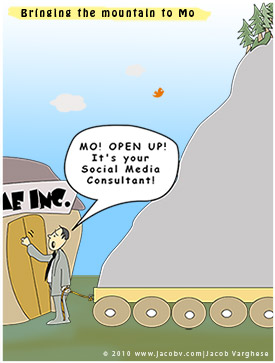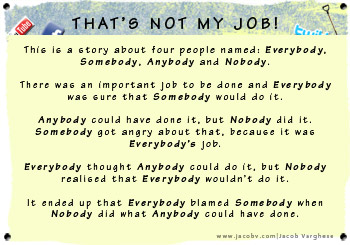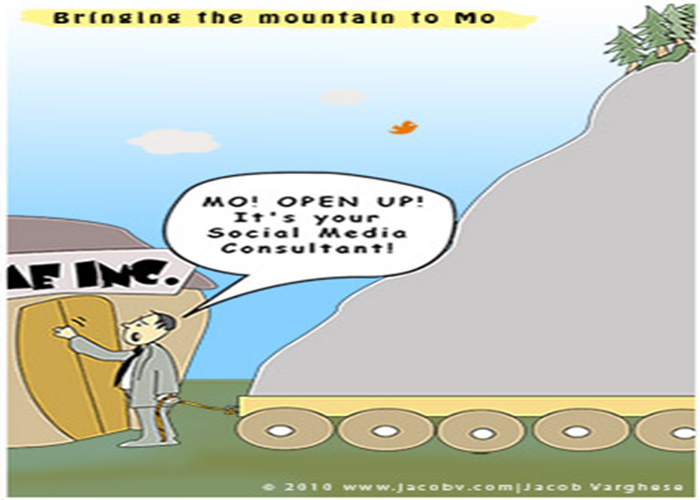
The New York Times recently eliminated the position of Social Media Editor, held by Jennifer Preston, who affirmed
Social media can’t belong to one person; it needs to be part of everyone’s job,
It has to be integrated into the existing editorial process and production process. I’m convinced that’s the only way we’re going to crack the engagement nut.
Mallary Jean Tenore, details how many of Jennifer’s colleagues at NYT, went from social media skeptics to enthusiastic participants.
What did I hear at the very beginning? ‘Twitter is all about what people are having for lunch.’ Now, no one says that anymore.
At Best Buy, social media and social recruiting are
kind of everybody’s job
according to Josh Kahn, Manager, Emerging Media Technology. Todd Raphael has written more on how Best Buy uses social media to engage potential recruits as well as customers, in conversation.
At IBM, the social media approach is decentralized. Adam Christensen, social media communications, says
We represent our brand online the way it always has been, which is employees first. Our brand is largely shaped by the interactions that they have with customers.
More on IBM’s social media story, by Casey Hibbard, including how it spurs unprecedented collaboration and innovation.
A decentralized social media approach
I find the IBM approach comes closer than others, to the Holistic model of social media engagement (report by Jeremiah Owyang). This model, as I have mentioned previously, seems to be the inevitable evolutionary destination of social media in the business world.
With companies like IBM leading the charge in seamlessly humanizing social media engagement in business, an approach that tends to be more ‘corporate’ may seem comparatively unauthentic and potentially less effective.
The IBM experiment seems to confirm that self-promotion, empowerment and innovation can be powerful incentives for employees to drive social media engagements, internally and externally. It also demonstrates how employees enhance their personal brand and careers while adding value to their employers.
We don’t have a corporate blog or a corporate Twitter ID because we want the ‘IBMers’ in aggregate to be the corporate blog and the corporate Twitter ID
says Adam Christensen, of IBM
Doing so allows the expertise/specialists at IBM to be easily found by internal and external customers. Employees create content, information and knowledge bases- and in the process, are positioned to engage with customers at multiple touch points…from product development to customer service. An ever-expanding, organic, seemingly grassroots social media movement is the envy of any organization.
The road ahead- 2011 and beyond.

Decentralization and relinquishing control over the social media presence can be hard sell at a time when many businessmen are uncertain of the very viability of social media to their businesses. Other potential roadblocks could include:
- From an employee’s perspective, added responsibilities can be considered as unwelcome additions to task lists especially if/when existing resources are already stretched.
- I find that executive buy-in for social media is elusive in smaller businesses, ironically, the very organizations that can probably gain the most from it.
- Many regard Facebook, Twitter etc. as tools for casual entertainment. It will take leadership, education and training to establish these as important tools for career growth and development.
- In an environment where social media adoption is decentralized and unforced, employees will have their own preferences. E.g.: Some may prefer Twitter over Facebook while others may choose to engage only on blogs.
With such diversity, gathering relevant metrics, to track results, could prove challenging.
As we try to understand and implement these new tools of social engagement, we are still in the nascent stages of social media marketing. Indeed, one of the major responsibilities of a social media consultant/manager, for 2011 and possibly beyond, may be to guide and help organizations confidently transition towards a decentralized model of social media implementation.
What other obstacles do you see in achieving a decentralized approach to social media? Do you agree that social media is everyone’s job?

